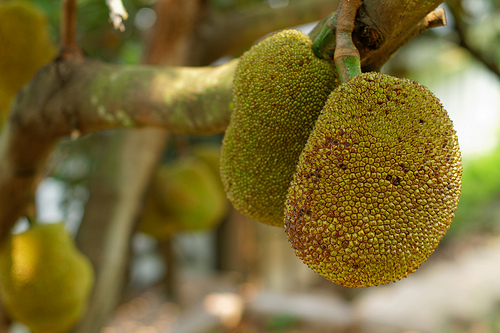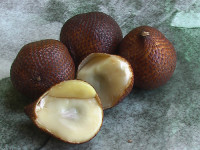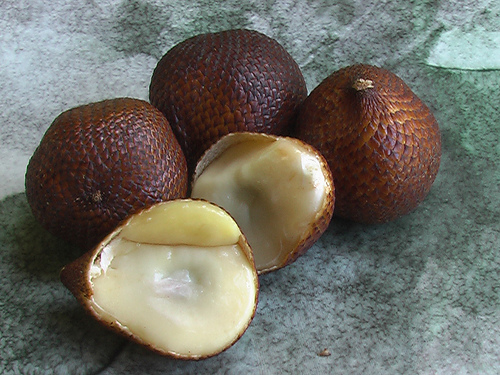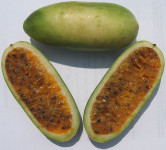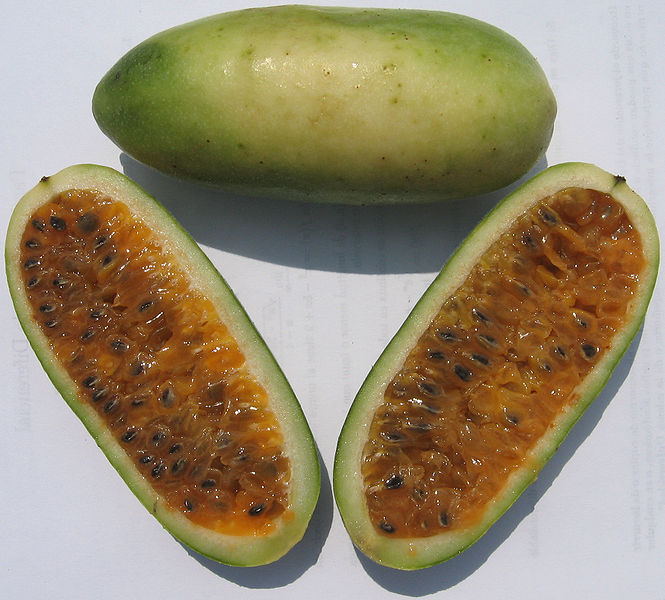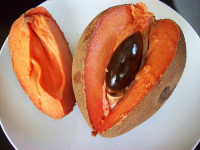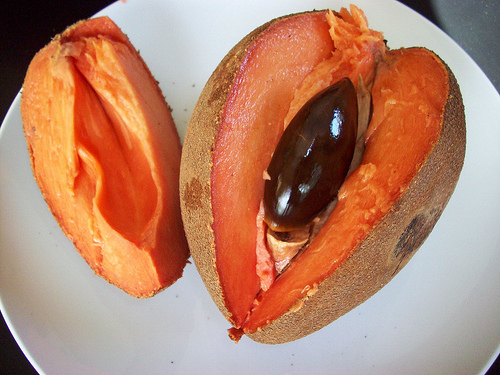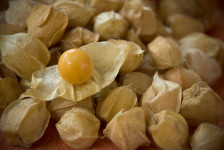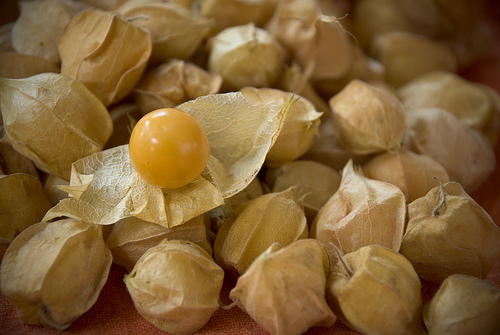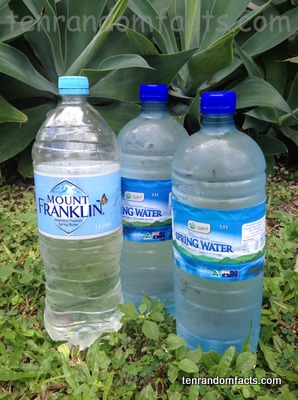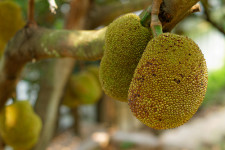
Jackfruits have a little bit of everything.
- Jackfruits are a variety of bulky exotic fruit, most likely originating in the rainforests of southwestern parts of India, and later introduced to a number of tropical areas of southeast Asia.
- The scientific name of the tree that produces jackfruit is Artocarpus heterophyllus and it is from the family Moraceae, the family of figs and mulberries.
- Jackfruits’ are also known as ‘jakfruits’, ‘jack trees’, ‘jaka’, ‘jaca’, ‘jaks’, ‘jacks’ and ‘nangka’; and Bangladesh has named it its national fruit.
- At dimensions of up to 91 centimetres (36 inch) by 50 centimetres (20 inches), and weighing 4.5 to 50 kilograms (10 to 110 pounds), jackfruits are known as the largest fruit produced by a tree.
- Jackfruits are quite sweet and fruity, with a mixed taste of bananas, apples, and pineapples when ripe, and the taste is somewhat like meat when unripe and cooked.
Some Jackfruit
Image courtesy of Lee Wu/Flickr
- From 100 to 500 individual jackfruits are produced annually by a single tree, and the ripe fruit tends to have an unpleasant odour, and releases latex sap when cut.
- Jackfruits are a versatile fruit and can be eaten fresh or cooked; canned, dried or candied; used as a fruit or vegetable; added to dishes like curries; or made into jam, condiments, pickles, ice-cream, noodles, alcoholic beverages, and flour; while the seeds can be eaten like tree nuts.
- Jackfruits have a yellow to green skin colour when ripe and are bumpy in texture; and the yellow flesh grows in segments, each containing a seed, while each fruit can contain from 100 to 500 seeds.
- While in years past, India has been one of the top producers of jackfruit in the world, in many areas the fruit has gone to waste or has been underutilised, due to public perception; effort of preparation of the fruit due to the latex; and lack of demand.
- Jackfruits consist of a wide variety of nutrients, and are high in vitamin C, magnesium, copper, potassium and manganese.
Bibliography:
Kuzoian A, We Tried Jackfruit — the Huge Tree Fruit that Supposedly Tastes Like Pulled Pork, 2015, Business Insider Australia, http://www.businessinsider.com.au/barbecue-jackfruit-pulled-pork-taco-taste-test-2015-9
Jackfruit, 1996, California Rare Fruit Growers, Inc, https://www.crfg.org/pubs/ff/jackfruit.html
Jackfruit, 2006, Northern Territory Government, http://www.nt.gov.au/d/Content/File/p/Fruit/FF7_jackfruit.pdf
Jackfruit, 2016, Wikipedia, https://en.wikipedia.org/wiki/Jackfruit
Jackfruit, n.d, Purdue University, https://www.hort.purdue.edu/newcrop/morton/jackfruit_ars.html/
Suchitra M, The Jackfruit Will Definitely Become the Most Sought-After Fruit in the Coming Years in India, 2015, Down to Earth, http://www.downtoearth.org.in/interviews/-the-jackfruit-will-definitely-become-the-most-sought-after-fruit-in-the-coming-years-in-india–50450





